WHAT’S IN A NAME?
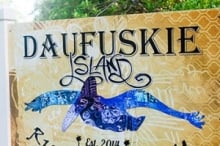
Daufuskie comes from the Muscogee language and means “sharp feather” for the island’s distinctive shape. Long before European colonists arrived to the New World, native peoples called Daufuskie Island home as evidenced by artifacts dating back some 9,000 years. Not to mention ancient piles of oyster shells which stand as testament that people have been enjoying the abundance the island has to offer since before time was even really counted.
TIME WITHOUT COUNTING
Native artifacts found on Daufuskie date back at least nine thousand years, so the European and American stories take place only in the past couple of minutes in the hour of history. Ancient piles of oyster shells testify that people found abundance and contentment on the island before time was counted. The name, Daufuskie, comes from the Muscogee language, meaning “sharp feather,” for the island’s distinctive shape.
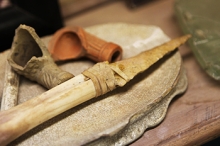
PLANTING FLAGS

In 1521 Spain claimed Daufuskie Island—and the entire Atlantic coastline from St. Augustine to Charlestown. Just four years later, the French staked their claim to nearby Port Royal, all the while the native peoples continued to thrive and live as they had for generations before.
Then, in 1684, Spanish soldiers enlisted the help of native soldiers to fight the Scottish soldiers who came to invade Port Royal, and thus began the uneasy and difficult history of native entanglement in European history. The inevitable clash of cultures culminated with a so-called Indian uprising that consisted of three brutal battles on the southwestern shore of Daufuskie Island between 1715-1717 that gave this piece of land the name it still bears today, Bloody Point.
TIME WITHOUT COUNTING
The quest for religious freedom ultimately brought two European families to Daufuskie Island—the great grandson of French Huguenot David Mongin, and the daughter of Italian Prince Filippo de Martinangelo who escaped the Inquisition. The story of these two founding families is intertwined throughout their long history, and both rose to become powerful plantation owners.
During the Civil War, plantation owners and slaves fled Daufuskie Island as Union Troops occupied the island. Once the war ended, the Gullah people (freed slaves) returned to the island to work in oyster canneries and the logging industry. Life was often hard, made more so by being cut off from the mainland, and as a result Daufuskie Island’s residents grew to create a close-knit, tightly bonded community that crossed racial lines—a rarity for the time.
Eventually, pollution closed the oyster beds in the 1950s and the island’s economy faltered and by the 1980s the Gullah population had dwindled from over 2,000 to roughly 60. Around this time developers started making plans to make Daufuskie Island a residential development destination and Bloody Point, Melrose, Haig Point, and Oakridge were born. Despite this newfound progress and development, the island’s historic district has remained untouched to preserve the Gullah culture and today the entire island is on the National Register of Historic Places.
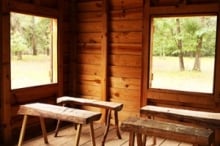
NATURE’S GIFTS
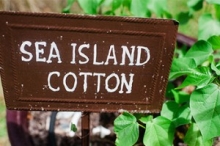
Rice and cotton were the traditional crops found on plantations throughout the Carolina Lowcountry. And the cotton grown on Daufuskie Island—Sea Island cotton—was considered to be the best in the world. In fact, Sir Ian Flemming wrote that 007 himself preferred Sea Island cotton shirts. The cotton was originally harvested and tended to by slaves from West Africa.
THE LANGUAGE OF ENDURING
The Gullah language is a legacy of the original slaves and later laborers who remained once the plantations folded. The Lowcountry was remote until the mid-20th century, but add the isolation of an island and it created the perfect climate for the language and manners of the Gullah people to remain remarkably well preserved. The language is a colorful and rhythmic blend of West African and rural English dialect that is becoming increasingly rare to hear.
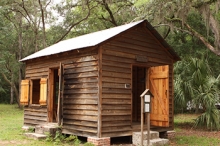
THE SPIRIT OF HOME
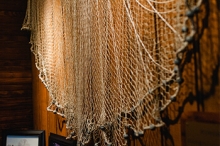
Plenty of islanders will tell you even the spirit world conspires to keep Daufuskie unspoiled. While there’s no shortage of ghost stories to hear, most just accept that the spirits are their neighbors—always have been, always will be. As you explore, notice the “heaven blue” shutters, doorways, and window frames on the old houses. One of our favorite artifacts bears the inscription:
De Ole Gullah say, ‘De blu keeps dem Haints away.’ Creatures of the night won’t pass through Openings painted Heaven Blue.
REDEVELOPMENT
In the mid-1980s a group of local investors in partnership with a large timber company purchased the Haig’s Point and Melrose plantation properties. Development on Haig’s Point began with hiring an archaeologist and historical architects who located the foundation of the mansion that once stood on the property. The beauty and grace of Haig’s Point today is a direct nod to the past. Meanwhile, the Melrose resort worked with Jack Nicklaus to develop a world-class golf course among other amenities.
PRESENT DAY
Thanks to the vision of those who treasure Daufuskie Island and recognize the island’s potential along with the expertise of the scholars and architects who have led the island’s redevelopment, a clear pla moving forward is in place. Daufuskie Island will be a place to discover historic sites and districts, walk through neighborhoods that feature beautiful open spaces, and to discover the stunning South Carolina coastline. Resorts with fantastic amenities will complement permanent residences and vacation homes for everyone to enjoy.
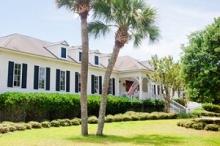
ROBERT KENNEDY HISTORIC TRAIL GUIDE
The Robert Kennedy Historic Trail maps out 20 of Daufuskie Island’s cultural and historical landmarks. Following the trail guide is an excellent way to get a feel for the island and to learn more about the people who have called it home for so many generations. Download the map or pick up a hard copy at the Billie Burn Museum.
BLOODY POINT LIGHTHOUSE AND MUSEUM
Constructed in 1882 and in service for half a century, the Bloody Point Lighthouse marked the coastline to guide boaters into the channel, and aid in safe passage into and out of the Savannah River. Today it is a well preserved historic structure which houses a collection of artifacts and documents telling the story of Daufuskie of the last century. An interpretive garden featuring heritage crops of the Low Country, such as cotton, rice and indigo is located on the grounds of the museum.
UNWIND & UNPLUG
Embark on a journey to a simpler time. Rich in history, culture, and natural beauty, Daufuskie Island is an unforgettable place to explore during your Lowcountry vacation.
